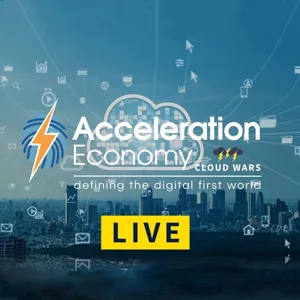How Neuroscience and Adaptive Learning Play a Crucial Role In Successful Change Management, With Dr. Britt Andreatta And Kelly Palmer.

In this episode of "The Digital Adoption Show," the focus is on the critical role of neuroscience and adaptive learning in successful change management within organizations adapting to the digital age. Dr. Britt Andreatta and Kelly Power are the featured guests who share their insights and strategies.
Dr. Britt Andreatta, an internationally recognized thought leader with a background in leadership, neuroscience, psychology, and learning, emphasizes three core human needs: survival, belonging, and becoming.
- She explains how these needs impact our response to change and the importance of understanding the "biology of resistance" when introducing digital adoption.
- Dr. Andreatta's three-phase model of learning aligns with how the brain naturally learns, emphasizing the importance of breaking learning into digestible chunks, connecting new information to existing knowledge (schemas), and providing ample practice opportunities.
- Metrics for evaluating the success of learning solutions are discussed, with a focus on the five levels of evaluation according to the Jack Phillips model, including satisfaction, learning, implementation, impact, and ROI.
- Managing change and getting employees excited about it involves acknowledging resistance as a natural biological response, highlighting opportunities, providing clear communication, and celebrating progress along the way.
- Finally, Dr. Andreatta advises thorough research before adopting new technology solutions, including compatibility checks and rigorous reference checks to ensure the selected solution aligns with the organization's needs and goals.
In the continuation of the podcast, Kelly Palmer, the Chief Learning Officer at Degreed, shares her insights on the changing landscape of work and learning in the digital age.Kelly identifies herself as a workplace futurist, emphasizing the need for organizations to adapt to the changing world of work and learning.
- She highlights the importance of forward-thinking companies that are preparing for the future by upskilling and reskilling their workforce. She mentions examples of companies like Booz Allen Hamilton and Amazon, which have initiated upskilling and reskilling programs to equip their employees with essential skills for the future.
- Kelly emphasizes the importance of measuring and quantifying the impact of upskilling and reskilling initiatives, which allows companies to track progress and ensure that their workforce is prepared for the challenges ahead.
- She also discusses the need for a learning culture within organizations, where employees are encouraged to take ownership of their learning and continuously acquire new skills. Kelly acknowledges that not all employees may initially embrace this mindset, but she emphasizes that the changing job market will likely compel individuals to keep their skills up-to-date to remain competitive.
- Kelly's insights provide a roadmap for organizations and individuals alike, urging them to proactively prepare for the future rather than react to it.
In summary, this episode delves into the neuroscience of change management, emphasizing the importance of understanding human needs, aligning learning with brain science, measuring the impact of learning solutions, managing resistance to change, making informed decisions when adopting new technology and the imperative need for organizations to embrace change in the rapidly evolving world of work and learning.



